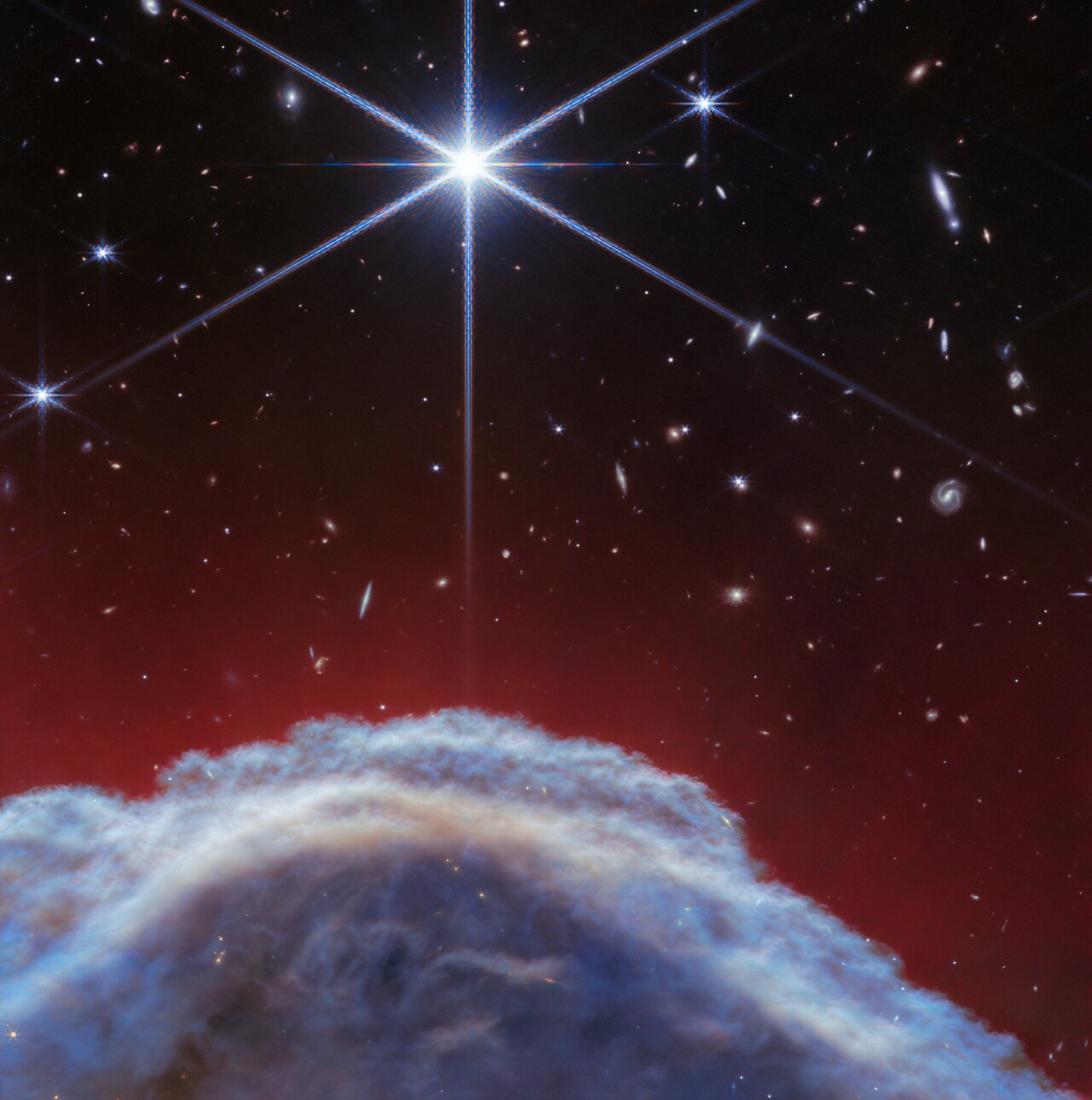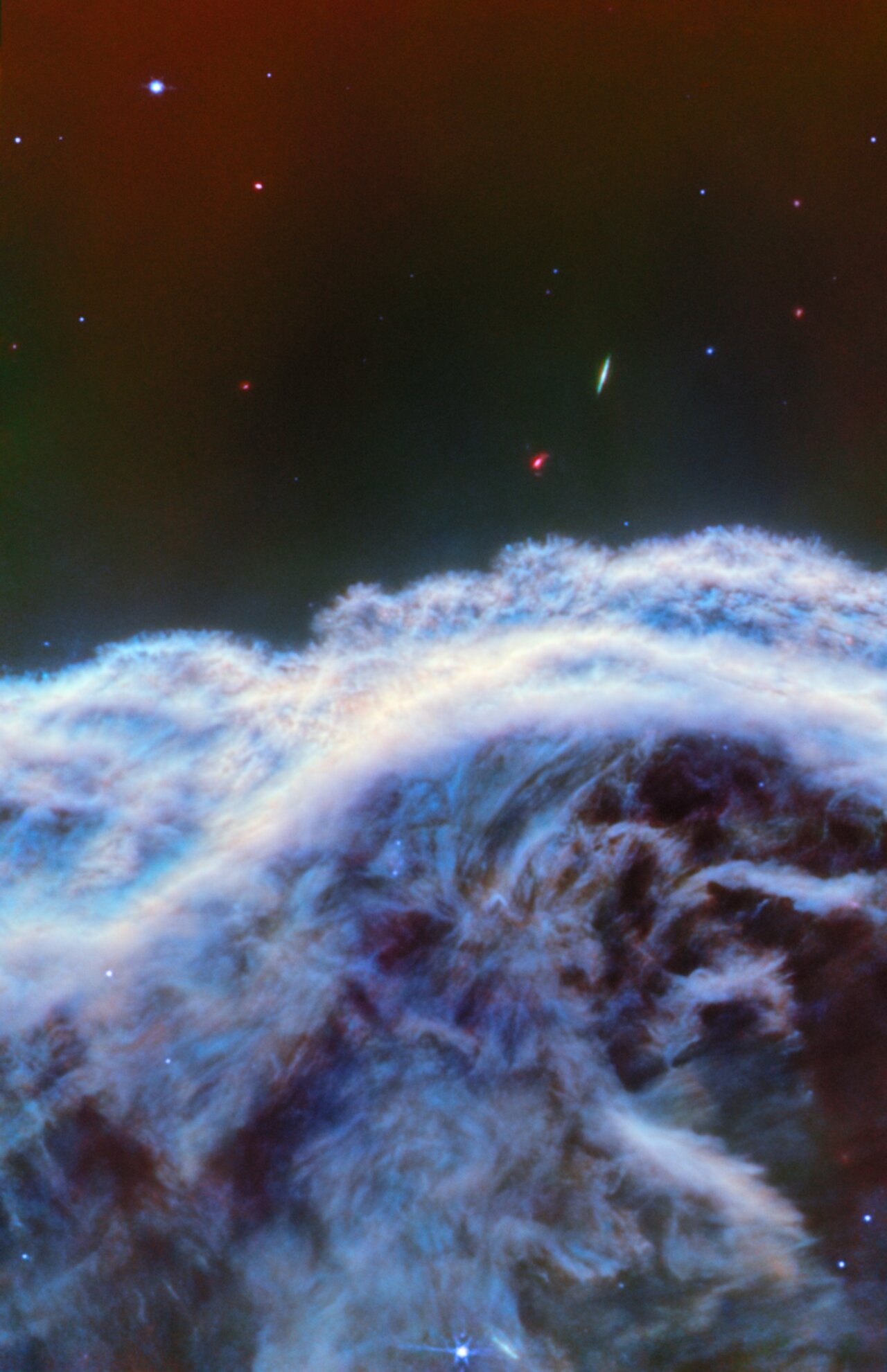Horsehead Nebula rears its head in gorgeous new James Webb Space Telescope images (video)
The stunning star-forming region is seen in a brand new light in the new images from the powerful space telescope.
The James Webb Space Telescope (JWST) has captured incredibly sharp images of the Horsehead Nebula, one of the most iconic celestial bodies in the sky over Earth.
The most powerful telescope ever placed into orbit around our planet, the JWST was able to see details of the Horsehead Nebula, also known as Barnard 33, that had never before been revealed, showing some regions in a completely new light.
The new images show the Horsehead Nebula as turbulent waves of gas rising from the western side of Orion B, a star-forming molecular cloud located 1,300 light-years from Earth in the constellation of Orion.
Related: James Webb Space Telescope discovers some early universe galaxies grew up surprisingly fast

The Horsehead Nebula is a collapsing cloud of dense, cool gas that is illuminated by a hot young star embedded in its top left edge. The horse-like structure that makes this nebula so distinctive has been created because lighter gas has been eroded. this has left a thick pillar of dense gas and dust that is harder to erode.
This won't last forever, though. Scientists estimate that in around 5 million years, even this pillar of denser matter will be gone.

The JWST's Near-InfraRed Camera (NIRCam) instrument was able to capture a small portion of the Horsehead Nebula close-up. This results in it appearing as a curved wall of thick, smoky gas and dust with distant stars and galaxies over it. Particularly evident is one large and bright star that shows the distinctive diffraction spikes associated with images created using the JWST.
Get the Space.com Newsletter
Breaking space news, the latest updates on rocket launches, skywatching events and more!

The JWST's other primary camera, the Mid-Infrared Instrument (MIRI) was also able to catch a stunning image of part of the Horsehead Nebula. A small portion of the nebula fills over half of this image with thick white and blue smoke punctuated by dark voids.

The Horsehead Nebula is a photon-dominated region (PDR), an area of space where young massive stars warm up the gas and dust between stars. These cold clouds exist between hotter ionized gas closer to the newborn stars. In PDRs, these stars impact the chemistry of this gas and dust with their ultraviolet light emissions. PDRs are found between stars where gas is dense enough to resist ionization but is still not too dense to allow ultraviolet light to pass through it.
Studying the light from PDRs allows scientists to study how interstellar matter evolves and the chemical processes that define this evolution.
The fact that the Horsehead Nebula is relatively close to Earth means that it is the ideal PDR for astronomers to use in conducting these investigations, determining the structure of PDRs, and studying the interactions of radiation and chemistry in interstellar space. These images show that the JWST is poised to make an impact in this investigation.
The results of the JWST's investigation of the Horsehead Nebula have been accepted for publication in the journal Astronomy & Astrophysics.
Join our Space Forums to keep talking space on the latest missions, night sky and more! And if you have a news tip, correction or comment, let us know at: community@space.com.

Robert Lea is a science journalist in the U.K. whose articles have been published in Physics World, New Scientist, Astronomy Magazine, All About Space, Newsweek and ZME Science. He also writes about science communication for Elsevier and the European Journal of Physics. Rob holds a bachelor of science degree in physics and astronomy from the U.K.’s Open University. Follow him on Twitter @sciencef1rst.
-
cat-phancier ReplyAdmin said:The James Webb Telescope has zoomed in on the Horsehead Nebula, capturing slices of this stunning star-forming region close to Earth in an entirely new light.
Horsehead Nebula rears its head in gorgeous new James Webb Space Telescope images (video) : Read more
Hi, new member here! Avid amateur astronomy enthusiast, in Utah, USA.
I assist my husband Stephen Waldee in producing our hobbyist amateur observing website, which in various forms has been online (intermittently) since the mid-nineties! We took it offline last January, but the wonderful Webb telescope imagery has prompted us to return at least PART of it online again--since much of our site was devoted to the discovery, history, and observing of the Horsehead.
Am I allowed to post the URL?
Regina -
COLGeek Reply
Self promotion/advertising is not allowed. If your site is monetized, then no.cat-phancier said:Hi, new member here! Avid amateur astronomy enthusiast, in Utah, USA.
I assist my husband Stephen Waldee in producing our hobbyist amateur observing website, which in various forms has been online (intermittently) since the mid-nineties! We took it offline last January, but the wonderful Webb telescope imagery has prompted us to return at least PART of it online again--since much of our site was devoted to the discovery, history, and observing of the Horsehead.
Am I allowed to post the URL?
Regina
You can also upload images to a site link imgur.com and post a link here, along with any description you would like.
Welcome to Space! -
cat-phancier Reply
I have not received 'permission' to post our URL for the Horsehead history/observing articles, so I beg your forgiveness; here it is:cat-phancier said:Hi, new member here! Avid amateur astronomy enthusiast, in Utah, USA.
I assist my husband Stephen Waldee in producing our hobbyist amateur observing website, which in various forms has been online (intermittently) since the mid-nineties! We took it offline last January, but the wonderful Webb telescope imagery has prompted us to return at least PART of it online again--since much of our site was devoted to the discovery, history, and observing of the Horsehead.
Am I allowed to post the URL?
Regina
http://www.reginacelestial.byethost16.com
This is a non-commercial personal hobby site; not SPAM and not collecting data nor doing anything objectionable; we write only for fellow enthusiasts, visual observers, and astrophotographers. We hope this post does not bring objections.
Best,
Regina
